Summary
And where did the new cards sort themselves now? Because I can’t avoid a conclusion after all the measurements and benchmarks. Let’s therefore start with the larger Radeon RX 7800XT 16 GB. AMD has deliberately positioned the NAVI32 full upgrade for 549 Euros RRP against NVIDIA’s GeForce RTX 4070 12 GB. As of this morning, it costs at least 595 Euros, which is almost 50 Euros more. And now you have to weigh what you would rather play in the future – pure raster graphics or games with DXR or ray tracing capabilities. The GeForce RTX 4070 12 GB has 4 GB less memory, which should not be a big issue in WQHD yet, but could be at some point.
In QHD, the Radeon RX 7800XT MBA easily takes 5.5% off the RX 6800 XT in the 60:40 percent mix of raster and ray tracing games and is thus both faster and a bit more frugal. The Radeon RX 7800XT is 2.6 percentage points behind the GeForce RTX 4070 FE 12 GB. It would even be ahead in pure raster graphics, but clearly behind in DXR. What is disappointing, however, is the power consumption, even if AMD does not consider it to be that relevant for gamers. We wouldn’t have to argue about a few watts, but the RTX 4070 FE consumes 61 watts less than the RX 7800XT MBA on average in all games. That is really a lot.
The XFX RX 7800 XT MERC 16 GB is only 0.7 percentage points behind the GeForce RTX 4070 on average in mixed performance and de facto achieves a tie and would leave the NVIDIA card far behind in pure raster graphics. However, this performance boost has been bought with the energy crowbar because there are now even 85 watts more at the power supply. Especially since the board partner card should be considerably higher than the RRP. Here, not only the power comes into play, but also the necessity to dissipate this waste heat, because the system heats up much faster. More was not to be expected from NAVI32, which can almost be calculated with a calculator. Thus, the big surprise has failed to materialize and AMD sells the card via the price and the argument of offering more memory. I’ll write something about FSR3 in a moment when it comes to the feature set compared to NVIDIA.
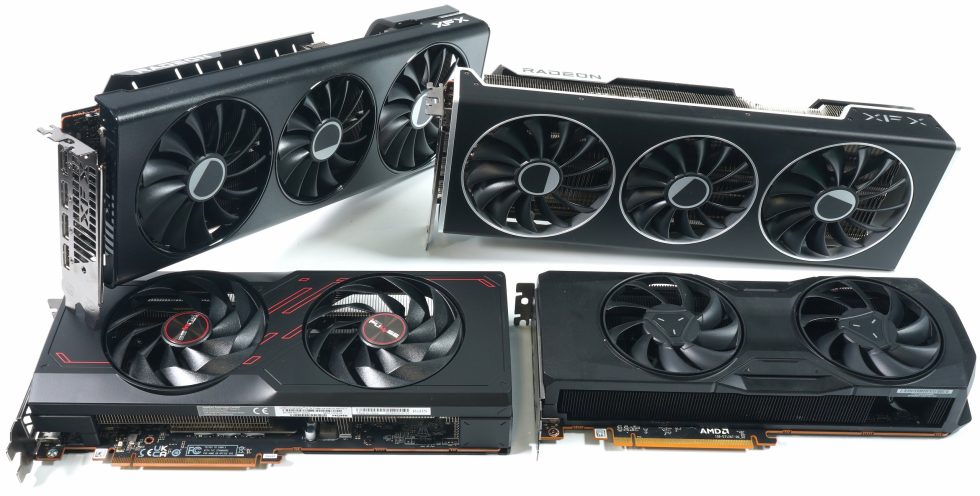 But before that, let’s take a look at the Radeon RX 7700XT. That there is no MBA card from AMD is justified with a lack of buyer interest in MBA cards. I can’t quite understand that, because these cards are usually the most reasonable offers in the respective chip class. And you wouldn’t even have risked fragmentation here, because apart from one less voltage converter phase and a lower power limit in the firmware, the cards are identical. However, you won’t earn much from it if you don’t reduce the price further. The 489 euro RRP makes the Radeon RX 7700XT a typical upselling product.
But before that, let’s take a look at the Radeon RX 7700XT. That there is no MBA card from AMD is justified with a lack of buyer interest in MBA cards. I can’t quite understand that, because these cards are usually the most reasonable offers in the respective chip class. And you wouldn’t even have risked fragmentation here, because apart from one less voltage converter phase and a lower power limit in the firmware, the cards are identical. However, you won’t earn much from it if you don’t reduce the price further. The 489 euro RRP makes the Radeon RX 7700XT a typical upselling product.
That sounds paradoxical at first, but it is quite understandable from AMD’s point of view. The gap to the currently around 270 euro Radeon RX 7600 is huge. Especially since the small Navi33 card can’t really do anything. If you prefer AMD as a provider, you’ll inevitably have to buy an RX 7700XT if it’s not quite enough for the RX 7800XT. Yes, he could of course climb the ladder more slowly and go for an RX 6750XT that costs at least 365 Euros, but he would then have a slower card. And the 120 Euros more is still a lot of money to spend. The RX 7700XT will sell well in the shadow of the RX 7800XT, maybe even better in the end
The reason is actually simple, because NVIDIA doesn’t really have anything in this performance class. The GeForce RTX 4060 Ti with 8 GB, which costs at least 399 Euros, is no opponent at all. The card simply lacks basic performance and is slower than the just mentioned RX 6750XT anyway. The 16 GB variant for around 500 Euros doesn’t help either; the Radeon RX 7700XT simply offers more here. AMD gratefully pokes into a huge gap with this card that NVIDIA has criminally (or even intentionally?) left open. And that’s exactly why I feel the absence of the MBA card is a loss.
The feature set of AMD cards could be significantly upgraded soon with FSR, only they’ve been preaching that since February this year. It didn’t work out with Starfield yet, now we’re waiting for the first DL to Cyberpunk 2077, NVIDIA’s playground, where FSR 3 is supposed to be integrated for the first time. I really wish AMD all the best, but to try to premiere exactly this hunk either shows great self-confidence or pure nihilism. We’ll of course follow and test this objectively and without prejudice, because competition never hurts.
AMD Radeon RX 7800XT MBA 16 GB
It’s a well-done reason card within the scope of feasible efficiency, which doesn’t allow itself any real weaknesses and has been really solidly constructed. The fact that three expensive PWM controllers and the matching Smart Power Stages are used instead of cheaper DrMOS, well, yes. It only helped to a limited extent. But the card looks extremely solid and well thought-out. The dimensions are acceptable and still quite compact. This game type will certainly find its buyers, there’s no need to speculate.
XFX Radeon RX 7800XT MERC 16 GB
XFX has left reason aside and used the same board to build a fun card with an integrated crowbar, which gives NAVI32 another boost and can even catch up with the GeForce RTX 4070 in terms of performance. It is also quiet, but the coil whine should be practiced a bit more. XFX sets the MSRP at $529.99 to $539.99, which puts the card in a much worse position than the GeForce RTX 4070. However, we have to wait for the launch and the real Euro prices to make an objective and fair judgment. But it will certainly be close. However, the card is well-done, visually and haptically on par and the PCB is also completely okay.
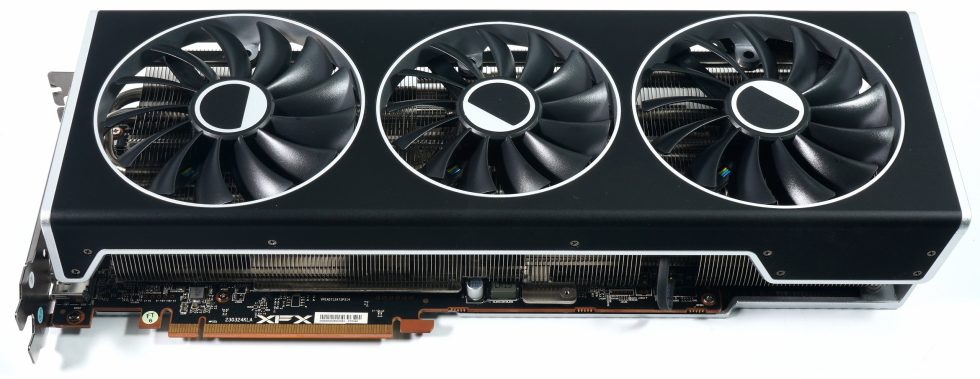 XFX Radeon RX 7700XT QICK 12 GB
XFX Radeon RX 7700XT QICK 12 GB
The same PCB, similar cooler and a similar look – this card can score with that, because it is almost as quiet as its big sister and much more economical. In terms of efficiency, it is clearly ahead, even if it is simply not enough against the NVIDIA cards. But it is a solid card without any capers, that has to be fairly conceded. The coils are also much more restrained here. As for the price, at 459.99 – 469.99 USD MSRP, it’s also above the Euro MSRP again, and we’ll have to wait and see what the stores end up pricing out. In any case, the card isn’t bad, just plenty big.
Sapphire Radeon RX 7700XT Pulse 12 GB
This card is almost as compact as AMD’s RX 7800XT MBA card and also uses a modified custom PCB, which suggests the Nitro by the unoccupied placeholders for MCU and ARGB. In addition, and I will also test the RTX 7800XT Nitro and the RX 7700XT Pure, another phase can be connected to the PEG. Let’s see what this brings, if any. The card is somewhat limited by the tighter power limit compared to the XFX card and even requires a bit more power due to the different PCB. But these are minor differences. The card looks solid and cleanly processed, you can’t expect more anyway.
Conclusion
Better late than never. AMD must have said that to itself with this launch, because they could have sold the whole thing a long time ago. Above all, the Radeon RX 7700XT doesn’t have a real opponent and whether the 4 GB more memory of the RX 7800XT and a slightly lower price can compete with a GeForce RTX 4070 remains to be seen. Some customers will want to use DLSS, Frame Generation and NVIDIA’s entire AI gadgets, that is out of the question. However, it remains to be seen how relevant this will be for the masses, because you really have to see if it goes over the price. If not, the Radeon RX 7700XT is the real star of this launch. I wouldn’t have thought so at the beginning either. My only concern is the actual availability, but there we will have to see what really arrives.
The graphics cards were provided by AMD and the board partners for this test. The only condition was the adherence to the lock period, no influence or compensation took place.
- 1 - Introduction and overview of Navi32
- 2 - The cards from AMD, Sapphire and XFX at a glance
- 3 - Test system and the igor'sLAB MIFCOM-PC
- 4 - Teardown: PCB and components
- 5 - Teardown: Cooler and surprising material analysis
- 6 - Gaming-Performance in Full-HD (1920 x 1080)
- 7 - Detailed Metrics for Full-HD (1920 x 1080)
- 8 - Gaming-Performance in WQHD (2560 x 1440)
- 9 - Detailed Metrics for WQHD (2560 x 1440)
- 10 - Details: Power consumption and load balancing
- 11 - Load peaks, capping and PSU recommendation
- 12 - Temperatures, clock rates and infrared analysis
- 13 - Fan curves and operating noise
- 14 - Summary and conclusion















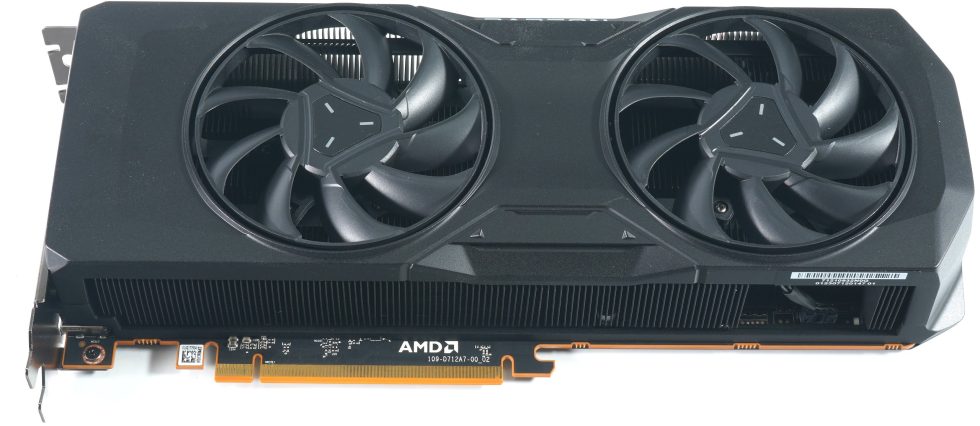
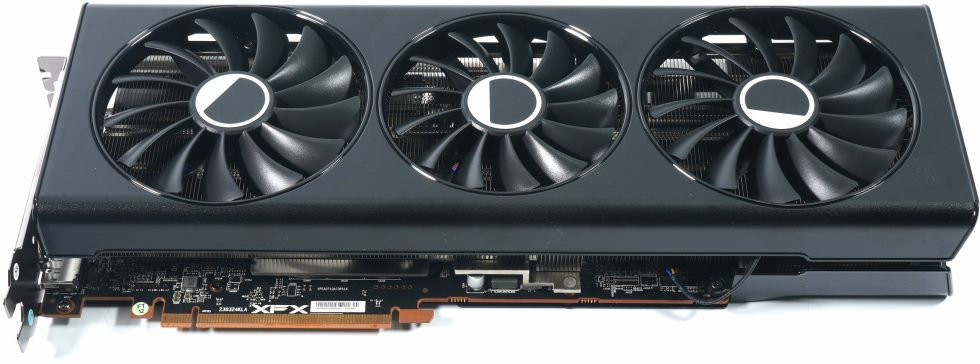
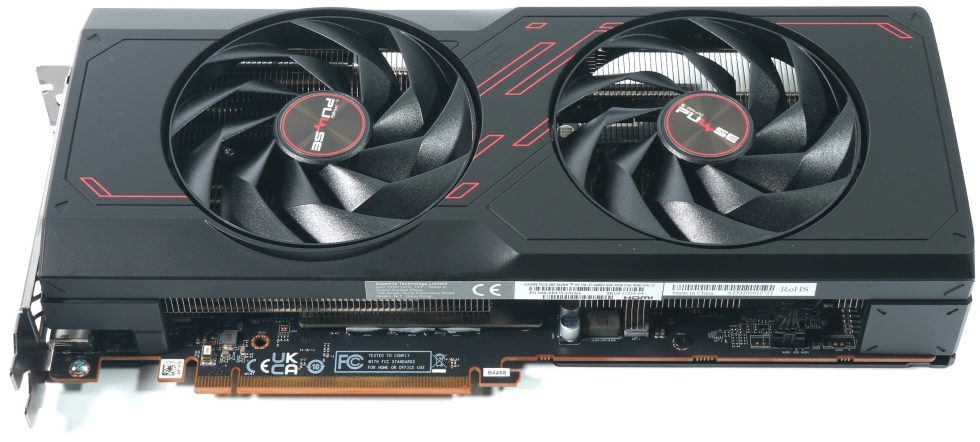








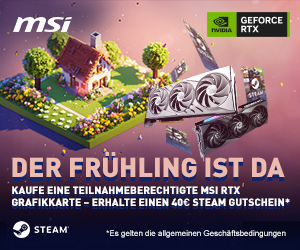








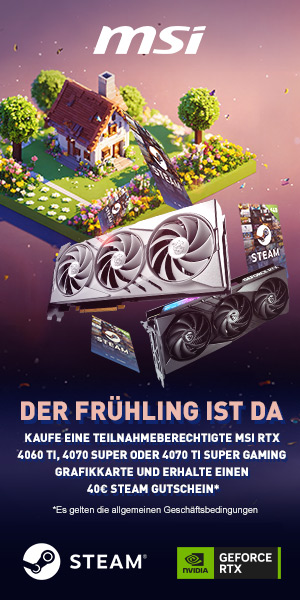

167 Antworten
Kommentar
Lade neue Kommentare
Urgestein
1
Urgestein
Urgestein
Urgestein
Mitglied
Urgestein
1
Mitglied
Veteran
Urgestein
Veteran
Veteran
Mitglied
Urgestein
Veteran
Veteran
Urgestein
Alle Kommentare lesen unter igor´sLAB Community →